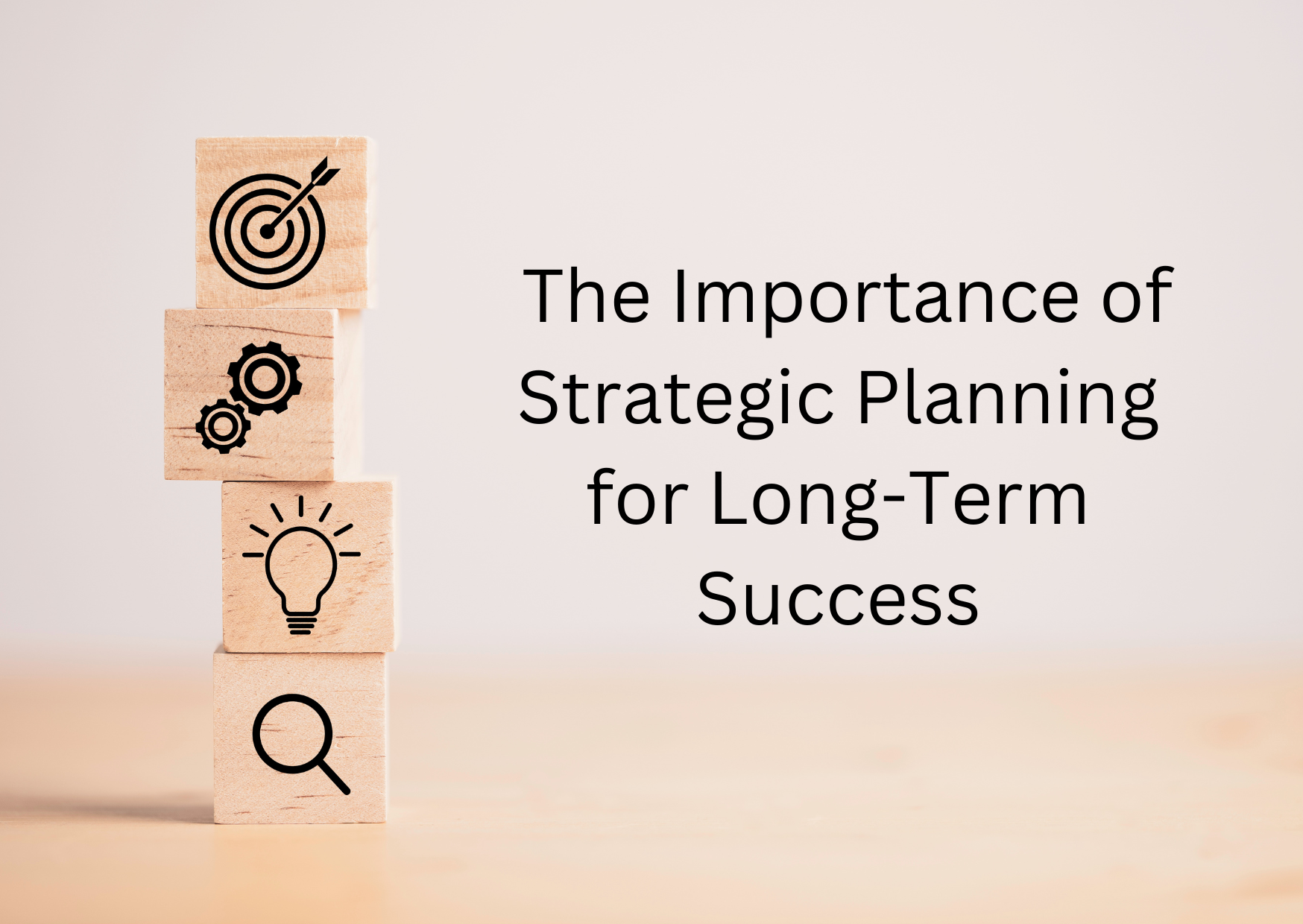In the fast-paced and ever-changing business environment, strategic planning is crucial for long-term success. It involves setting goals, determining actions to achieve those goals, and mobilizing resources to execute the actions. Effective strategic planning allows organizations to anticipate challenges, allocate resources efficiently, and stay ahead of the competition. This blog explores the importance of strategic planning and how it can drive sustained success.
1. Setting a Clear Vision and Direction
Strategic planning begins with establishing a clear vision and direction for the organization. This vision serves as a roadmap, guiding all decisions and actions. A well-defined vision helps employees understand the organization’s purpose and their role in achieving it. When everyone in the organization is aligned with the strategic goals, it fosters a sense of unity and purpose.
For instance, Tesla’s vision of accelerating the world’s transition to sustainable energy has guided its strategic decisions, from product development to market expansion. This clear direction has been instrumental in Tesla’s success and industry leadership.
2. Anticipating and Mitigating Risks
One of the key benefits of strategic planning is the ability to anticipate potential risks and develop strategies to mitigate them. By analyzing internal and external environments, organizations can identify threats and opportunities early on. This proactive approach enables them to adapt to changes and minimize the impact of unforeseen challenges.
For example, during the COVID-19 pandemic, organizations with robust strategic plans were better equipped to pivot their operations, implement remote work, and navigate supply chain disruptions. This agility allowed them to maintain continuity and emerge stronger from the crisis.
3. Efficient Resource Allocation
Strategic planning ensures that resources are allocated efficiently and effectively. By prioritizing initiatives that align with the organization’s goals, resources such as time, money, and personnel are directed towards the most impactful activities. This focused approach maximizes returns on investment and prevents resource wastage.
For instance, Apple’s strategic focus on innovation and design excellence has led to the efficient allocation of resources towards research and development. This strategic investment has resulted in a steady stream of groundbreaking products and sustained market leadership.
4. Enhancing Competitive Advantage
A well-executed strategic plan helps organizations build and maintain a competitive advantage. By understanding market trends, customer needs, and competitor strategies, organizations can identify unique value propositions and differentiate themselves in the market. This differentiation is crucial for attracting and retaining customers.
For example, Amazon’s strategic focus on customer-centricity, coupled with its investment in technology and logistics, has established it as a leader in e-commerce. This competitive advantage has enabled Amazon to dominate the market and expand into new sectors successfully.
5. Driving Long-Term Growth
Strategic planning is essential for driving long-term growth and sustainability. It provides a framework for setting ambitious yet achievable goals and outlining the steps to reach them. By continuously monitoring progress and adjusting strategies as needed, organizations can ensure sustained growth over time.
For instance, Microsoft’s strategic shift from a software-centric business to a cloud-first approach has fueled its long-term growth. By focusing on cloud services and subscription models, Microsoft has transformed its business and achieved significant revenue growth.
6. Fostering Innovation and Adaptability
Strategic planning encourages a culture of innovation and adaptability. By setting long-term goals and continuously evaluating the external environment, organizations can identify emerging trends and technologies. This proactive approach fosters innovation and ensures that the organization remains relevant in a rapidly evolving market.
For example, Google’s strategic planning has enabled it to diversify its product portfolio and explore new technologies, such as artificial intelligence and autonomous vehicles. This adaptability has positioned Google as a leader in multiple industries and driven continuous innovation.
Conclusion
Strategic planning is a critical component of long-term success. It provides a clear vision and direction, anticipates risks, allocates resources efficiently, enhances competitive advantage, drives growth, and fosters innovation. Organizations that prioritize strategic planning are better equipped to navigate challenges, seize opportunities, and achieve sustained success. In an increasingly complex and competitive business landscape, the importance of strategic planning cannot be overstated. By investing in strategic planning, organizations can build a strong foundation for long-term success and resilience.
